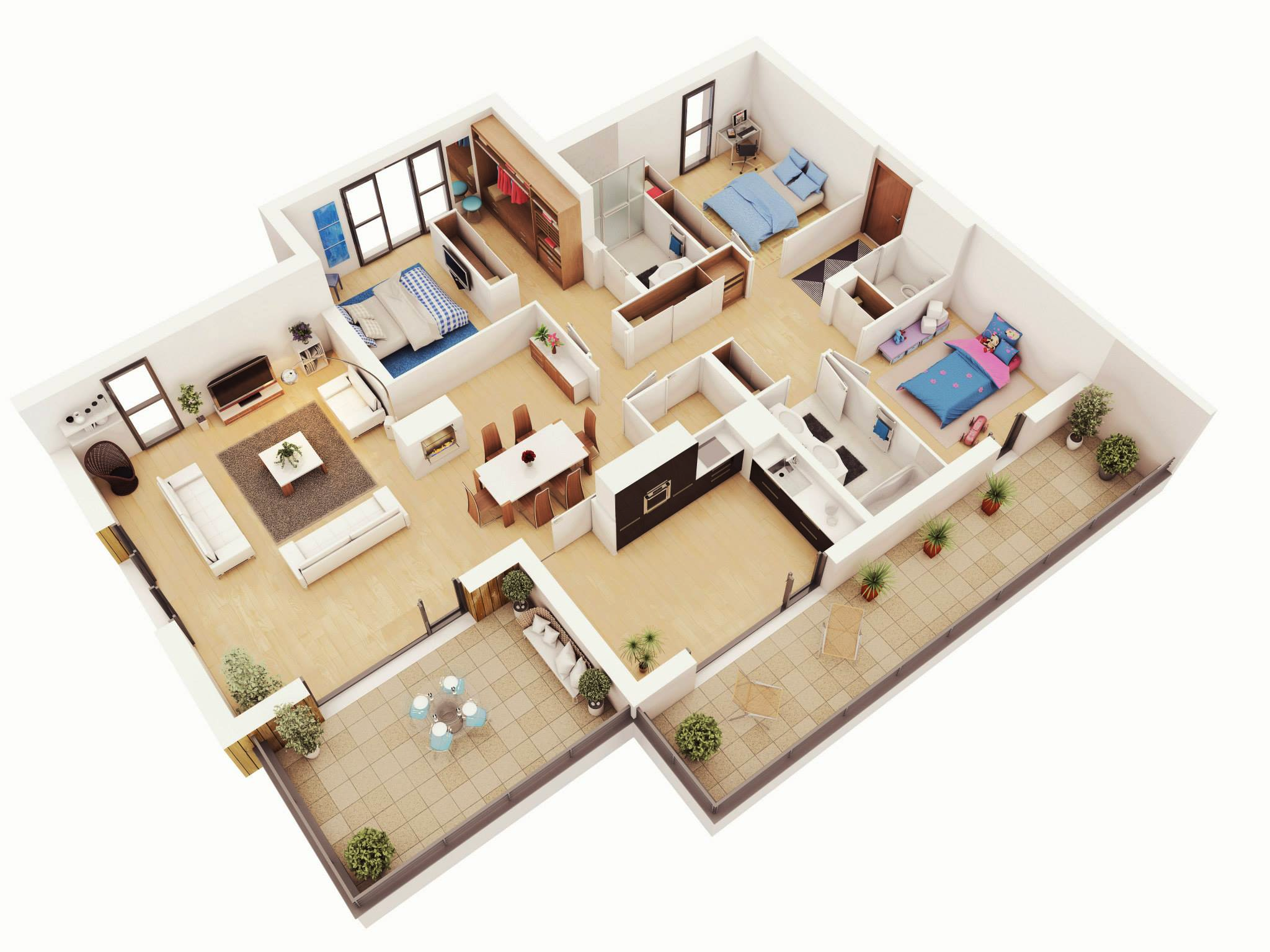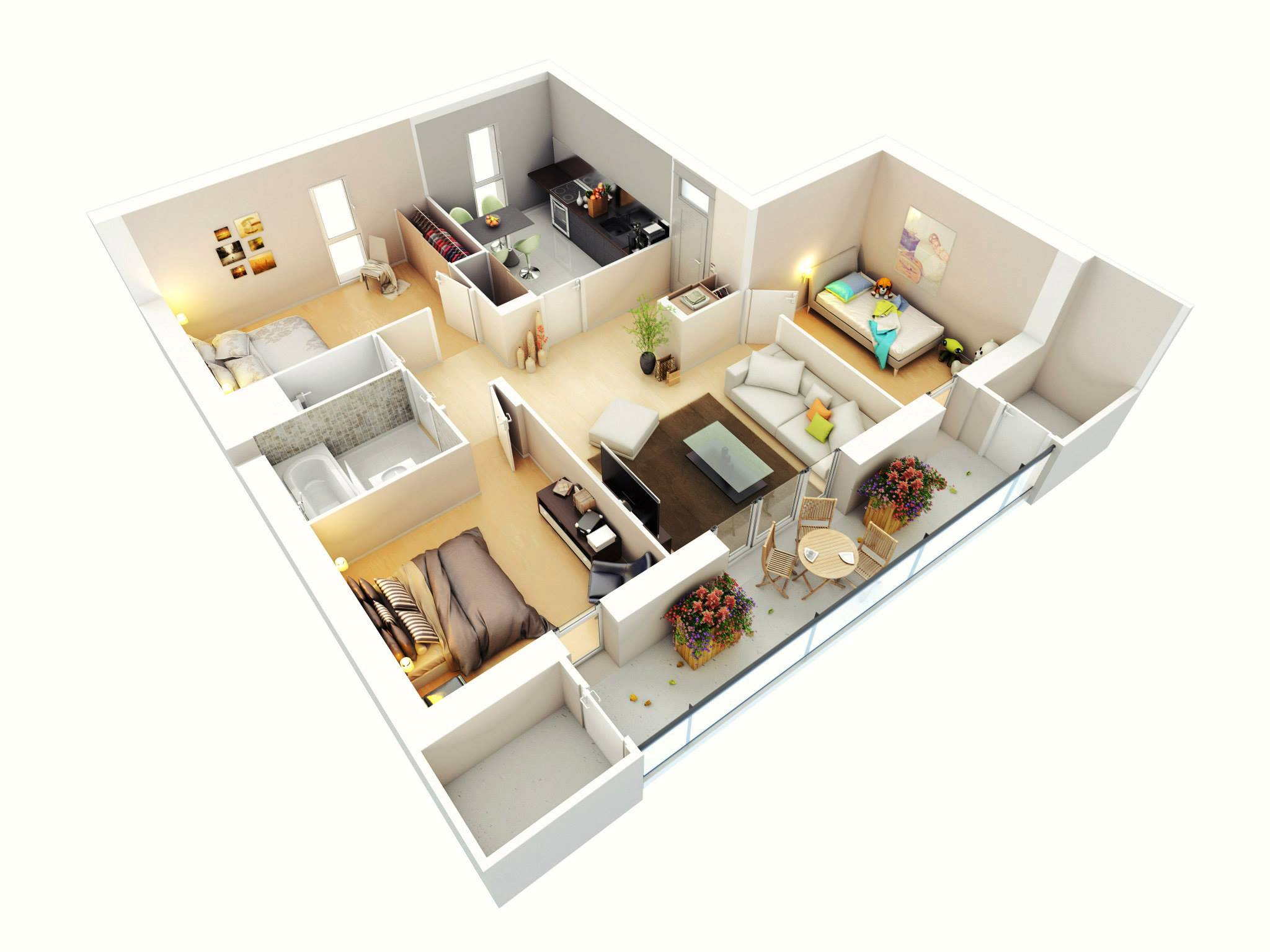Understanding the Appeal of a 3-Bedroom Upstairs House

A 3-bedroom upstairs house offers a desirable living arrangement for many individuals and families. The layout of these homes, with bedrooms situated on the upper level, provides numerous benefits and caters to a specific target audience.
Benefits of a 3-Bedroom Upstairs House
The layout of a 3-bedroom upstairs house offers several advantages that contribute to its appeal.
- Privacy and Quiet: Locating bedrooms upstairs creates a separation from the main living areas, ensuring privacy and a quieter environment for sleeping and relaxation. This is particularly beneficial for families with children or individuals who value peace and tranquility.
- Open Floor Plan: By placing bedrooms upstairs, the downstairs area can be designed with an open floor plan, maximizing space and creating a sense of openness and flow. This is ideal for entertaining guests or enjoying family time.
- Natural Light: Upstairs bedrooms often benefit from ample natural light, as they are typically positioned on the upper level of the house. This can create a brighter and more inviting atmosphere.
- Elevated Views: Depending on the location and surrounding environment, upstairs bedrooms may offer elevated views, providing a more picturesque and desirable living experience.
Target Audience for 3-Bedroom Upstairs Houses
The target audience for 3-bedroom upstairs houses typically includes:
- Young Families: These homes provide adequate space for growing families, with separate bedrooms for children and parents.
- Couples: A 3-bedroom upstairs house offers flexibility for couples, allowing for a guest room, home office, or hobby space.
- Empty Nesters: Empty nesters often appreciate the spaciousness and privacy that these homes provide, while also allowing for a dedicated guest room or hobby space.
Comparison to Other Home Configurations
Compared to other home configurations, 3-bedroom upstairs houses offer a balance of space, privacy, and functionality.
- Single-Story Homes: While single-story homes offer convenience for accessibility, they often lack the separation and privacy that upstairs bedrooms provide.
- Multi-Story Homes: While multi-story homes offer more space, they can be more expensive and require more maintenance. 3-bedroom upstairs houses provide a more manageable and cost-effective option.
Design Considerations for a 3-Bedroom Upstairs House

Designing a 3-bedroom upstairs house involves careful planning to maximize space and functionality. The layout should cater to the needs of the residents, ensuring a comfortable and efficient living experience.
Typical Layout of a 3-Bedroom Upstairs House, 3 bedroom upstairs house
A typical 3-bedroom upstairs house often features a layout that prioritizes separation between living and sleeping areas. The downstairs typically includes the living room, kitchen, dining area, and possibly a guest bathroom or powder room. The upstairs houses the bedrooms and the main bathroom. This arrangement provides privacy for residents and promotes a sense of separation between daily activities.
Floor Plan Design for a 3-Bedroom Upstairs House
A well-designed floor plan for a 3-bedroom upstairs house should consider the following aspects:
Living Area
The living room is usually the largest space on the downstairs level. It can be positioned at the front of the house, offering natural light and a view of the street.
Kitchen and Dining Area
The kitchen and dining area are often combined into a single open space. This layout promotes a sense of flow and encourages interaction between family members. The kitchen can be located at the back of the house, providing access to the backyard.
Bedrooms
The bedrooms are typically located on the upstairs level, providing privacy and quiet. The master bedroom is usually the largest, often featuring an en-suite bathroom. The remaining bedrooms can be configured based on the needs of the family.
Bathrooms
A 3-bedroom upstairs house usually includes at least two bathrooms: one on the downstairs level and one on the upstairs level. The upstairs bathroom typically serves the bedrooms, while the downstairs bathroom can be a guest bathroom or powder room.
Example Floor Plan
A possible floor plan for a 3-bedroom upstairs house could include:
* Downstairs:
* Living Room: 15′ x 20′
* Kitchen: 12′ x 15′
* Dining Area: 10′ x 12′
* Guest Bathroom: 5′ x 8′
* Upstairs:
* Master Bedroom: 12′ x 15′
* Master Bathroom: 8′ x 10′
* Bedroom 2: 10′ x 12′
* Bedroom 3: 10′ x 12′
* Bathroom: 8′ x 10′
This is just an example, and the specific dimensions and layout can be customized to suit the needs and preferences of the residents.
Common Design Styles for 3-Bedroom Upstairs Houses
Design styles for 3-bedroom upstairs houses can vary widely, reflecting the tastes and preferences of the homeowners. Some common styles include:
Traditional
Traditional homes often feature classic architectural elements, such as symmetrical facades, columns, and porches. The interior design typically emphasizes warmth and comfort, using rich colors, natural materials, and traditional furniture.
Modern
Modern homes are characterized by clean lines, open floor plans, and a focus on functionality. The interior design often features minimalist furniture, neutral colors, and natural light.
Contemporary
Contemporary homes are similar to modern homes but with a more updated aesthetic. They often feature bold colors, unusual materials, and unique architectural details.
The choice of design style depends on the homeowner’s personal preferences and the overall character of the neighborhood.
Living in a 3-Bedroom Upstairs House: 3 Bedroom Upstairs House

Living in a 3-bedroom upstairs house offers a unique blend of advantages and considerations. It’s essential to weigh the pros and cons carefully before deciding if this type of dwelling aligns with your lifestyle and needs.
Advantages and Disadvantages
The decision to live in a 3-bedroom upstairs house involves considering both its benefits and drawbacks.
Advantages
- Privacy and Space: Upstairs houses often provide more privacy than ground-floor units, especially if they are part of a multi-family building. The separation from the ground floor can offer a sense of seclusion and quiet. Additionally, 3 bedrooms provide ample space for families or individuals who require separate sleeping quarters.
- Natural Light: Upstairs units typically receive more natural light, which can enhance the overall feel of the space and contribute to a brighter and more cheerful living environment.
- Views: Depending on the location, upstairs units often offer better views of the surrounding area, providing a more expansive and enjoyable perspective.
- Security: An upstairs location can sometimes offer a greater sense of security, as it may be more difficult for unauthorized individuals to access.
Disadvantages
- Accessibility: Living upstairs can present challenges for individuals with mobility limitations, as it requires navigating stairs. This can be particularly relevant for older adults or those with disabilities.
- Noise: While upstairs units often provide some noise insulation, sounds from the lower floors or the exterior can still be noticeable. Depending on the building’s construction and the surrounding environment, noise levels can be a factor to consider.
- Limited Outdoor Space: Upstairs units typically have less outdoor space compared to ground-floor units. This can be a significant consideration for those who enjoy gardening or spending time outdoors.
Maximizing Space and Functionality
A well-designed 3-bedroom upstairs house can maximize its space and functionality, making it a comfortable and practical living environment.
Space-Saving Techniques
- Multifunctional Furniture: Incorporating furniture that serves multiple purposes, such as a sofa bed or a dining table that can double as a workspace, can help to optimize space and create a more flexible layout.
- Vertical Storage: Utilizing vertical space with shelves, cabinets, and storage solutions can help to keep belongings organized and out of sight, maximizing floor space.
- Mirrors: Strategically placed mirrors can create an illusion of larger space by reflecting light and expanding the visual field.
Functional Design Considerations
- Open Floor Plan: An open floor plan can create a sense of spaciousness, especially in smaller units. By removing walls and integrating the living, dining, and kitchen areas, a more expansive feel can be achieved.
- Efficient Kitchen Layout: A well-designed kitchen layout, with efficient use of counter space and storage, can enhance functionality and make cooking and meal preparation more enjoyable.
- Adequate Lighting: Proper lighting is crucial for creating a comfortable and functional living environment. Natural light should be maximized, and artificial lighting should be strategically placed to ensure sufficient illumination throughout the house.
Lifestyle Considerations
Living in a 3-bedroom upstairs house can influence your lifestyle in various ways.
Family Dynamics
- Family Size: A 3-bedroom upstairs house is suitable for families of various sizes, from couples to families with young children or teenagers. The number of bedrooms allows for individual space and privacy, while the shared living areas promote family togetherness.
- Child-Friendly Features: If you have young children, consider features like safety gates, child-proof locks, and a designated play area to create a secure and enjoyable environment for them.
- Teenage Privacy: For teenagers, providing them with their own bedrooms can be essential for fostering independence and privacy. A well-designed upstairs house can accommodate this need while maintaining a sense of family unity.
Lifestyle Choices
- Commuting: Location is a key factor to consider, especially if you rely on public transportation or have a long commute. An upstairs house may be more accessible if it’s located near public transportation hubs or major roadways.
- Outdoor Activities: If you enjoy spending time outdoors, consider the proximity of parks, hiking trails, or other outdoor amenities. While upstairs houses may have limited outdoor space, access to nearby green spaces can compensate for this.
- Socialization: If you value a strong sense of community, consider living in a neighborhood with active social events or community centers. While an upstairs house may offer privacy, it’s still possible to build relationships with neighbors and participate in community activities.
3 bedroom upstairs house – A three-bedroom upstairs house offers plenty of space for a growing family, and while the layout might be perfect, you might find yourself facing some cosmetic challenges. For instance, if you’re looking to refresh the bathroom, you might need to tackle some rust on the chrome fixtures.
A great resource for tackling this common issue is how to remove rust from chrome bathroom fixtures. Once you’ve revitalized the bathroom, you can start focusing on the rest of the house, making it a comfortable and stylish space for everyone to enjoy.